Just another WordPress.com weblog
Category: Haydn
D 845, Schubert has accumulated so much
Beethoven that his Beethoven is beginning
to shine through in his own compositions,
Beethoven was a forefather, still present,
it’s often difficult to tell one, indeed, from
the other, even here
Beethoven, see above, punched through
Classicism – Mozart, Haydn – its artificiality,
delivering emotion, instinctively, from the
very start, from which he nearly
single-handedly delivered to the world no
less than Romanticism, like delivering the
recalibration of time and space after
Einstein essentially, so profound a
cultural metaphysical reorganization
Schubert remains ever more courteous,
more beholden to the upper crust that
supports him, and that he ever wants to
court, you can hear it, listen, there is no
confrontation here, just, dare I say,
entertainment
Schubert was not a revolutionary
___________
o, I said, when my flute teacher, an art I’d taken up
too late in life, presented me with a piece I should
learn to play, the second movement of Haydn’s
adagios always remind me of John, I’d read, at
a modest ceremony of remembrance for him,
from a text I’d prepared, which prophetically,
transcendentally, connected me with a
cornucopia of adagios, I’d sought them out,
been consoled, repaired, eventually inspired,
by them, Haydn’s Opus 76, no.1, movement
two, had been a total shoe-in
Haydn is where the history of string quartets
starts in the West, they existed before, but
not formally as a musical format, became
thereafter, however, an identifiable category,
and consequently, imitated
the string quartet, a piece of music written
for four instruments, all string traditionally,
two violins, a viola, and a cello, playing
more than one segment of music,
Classically three, then becoming four,
became a structure that has not even
nowadays lost its appeal, though the
individual combinations might’ve
significantly, since, been altered
Haydn wrote 68 string quartets, which
established him as their spiritual father,
all string quartets devolve from him,
including Beethoven‘s, those of
marvel
R ! chard
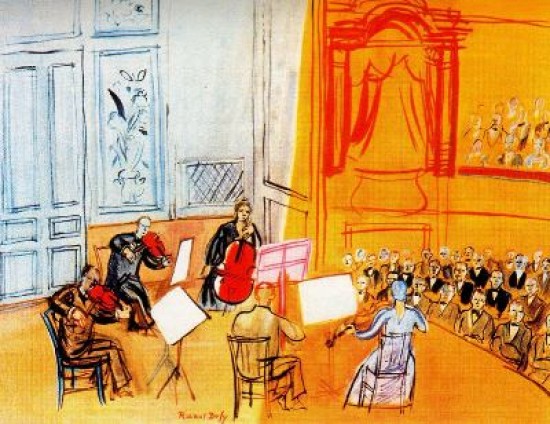
_____
if a trio is a sonata written for three instruments,
a sonata, a piece of music consisting of more
than one segment, or movement, written for
four instruments, is called a quartet
a quartet is also what we call the group itself
of four players
quartets can play more than just quartets, they
can also play waltzes, nocturnes, rhapsodies,
for instance, just as trios, groups of three, can
play more than just trios
but quartets, the form, have had a long and
glorious history, from Mozart and Haydn,
the Classicists, through Beethoven, an
ardent Romantic, to the more political
Shostakovich, enemy, for a time, of his
repressive Soviet state, and on to
Messiaen, who composed his own
concentration camp
let me start with the Messiaen, now that I’ve
whetted your appetite, and work our way back
to Mozart to see where we came from, and
how
there are seven movements in Quartet for
four, atonality abounds, discordant, not
unexpectedly, progressions, repetition also
takes its punches, not easily identifiable
throughout, but tempo, the third pillar of
Western music, more or less holds its
own, keeping the tradition, however
precariously, together, listen
it’s 1941, we’re in a concentration camp,
Messiaen is caught between hope and
despair, give the guy a break, he hasn’t
many absolutes to hold onto, tempo
might be one of them, the heartbeat,
pulse, perseverance, an actual human
pace, a rhythmic instinct, by which
eventually, hopefully, meaning
transpires
hope is in one’s creativity, he says, each
individual answer can be a tribute to
one’s own tribulations, our responses
can be poetry, lessons rather than
invectives, epiphanies rather than
agonies, may the Force, in other words,
be with you, in the face of even the most
trying difficulties, honour can supplant
trials, he concludes, given grace and
integrity
Beethoven says pretty much the same
corroboration
R ! chard

________
though there are other, and quite significant,
composers who fit into this category,
Beethoven, Schubert, and Chopin pretty
much define, all by themselves, the
Romantic Period
Chopin composed only two sonatas of note,
plus one more that is overlooked for being
an early, student effort, not up to the
standard of his later ones, Chopin, rather,
wrote mostly shorter pieces, nocturnes,
études, preludes, polonaises, and more,
that later became the very stuff of his
reputation
Schubert wrote enough sonatas that he
could be compared to Beethoven, indeed
it can be difficult to tell one from the other,
much as it can be difficult to tell Haydn
from Mozart, products in either case of
being both of their respective eras
when I was much younger, a guest among
a group of academics, where I’d been invited
by the host’s wife, a co-worker, what I knew
of Classical music, in the large sense, which
is to say comprising all of the musical periods,
Classicism, Romanticism, Impressionism,
and beyond, was all self-taught
is that Beethoven, I asked the host, about
a piece of music he’d put on
that’s Schubert, he replied, aghast, as
though I’d just farted
I blushed, deep red, confounded
Schubert, having great admiration for
Beethoven, took on many of the older
composer’s lessons, four movements
instead of the Classical three, for
instance, and many of the technical
tricks of his forebear
but there’s an essential component of
their styles that marks one from the
other, an easy way to tell them apart,
Beethoven always composes against
the beat, Schubert following it
listen to the first few notes of Beethoven’s
“Pathétique”, for instance, the beats are
erratic, confrontational, the mark of a
revolutionary, Beethoven was brashly
proclaiming his worth, he had something
to prove
Schubert, who was essentially playing
for friends, just wanted to entertain
them, which he did in spades, without
bombast or bluster
D959, for example, no swagger, no
ostentation, delivering nevertheless
something quite, and utterly,
enchanting, everything following,
unobtrusively, the beat
enjoy
R ! chard

_______
cause most composers, including the great
ones, didn’t write many sonatas, or not many
to equal their greatest compositions, I’ll skip
directly from Bach to Beethoven, who first
gave sonatas their commanding position
on the cultural map
he wrote 32, the early ones competent,
even admirable, others inspiring, several
completely transcendental
of the 32, here’s the first of my favourites,
“Pastorale”, German spelling, of 1801
you might wonder about all the letters and
numbers in the naming of early music, much
of it compiled by later musicologists, cause
titles hadn’t been given to musical pieces,
even Beethoven’s “Pastorale” had been
later provided by his publisher
music before the late Classical Period
might’ve been written down, but not
widely distributed, there wasn’t a
market for it until the advent of the
Middle Class, who now wanted
access to what the aristocracy had
earlier, what compositions existed
would’ve been the property not of
the composer, but of the duke,
baron, or prince who’d hired him
for his court, see Haydn here, for
when greater demand grew for music
manuscripts, titles little by little became
a manner of increasing marketing,
scores found their way throughout
Europe to supply the many amateurs
who’d gather and play before we had
television
some of these amateurs became
noteworthy performers, who also
began to proliferate, to fill the
burgeoning concert halls,
incidentally, there’s also a “Pastorale”
Opus 68, you might want to listen to
and compare
enjoy
R ! chard
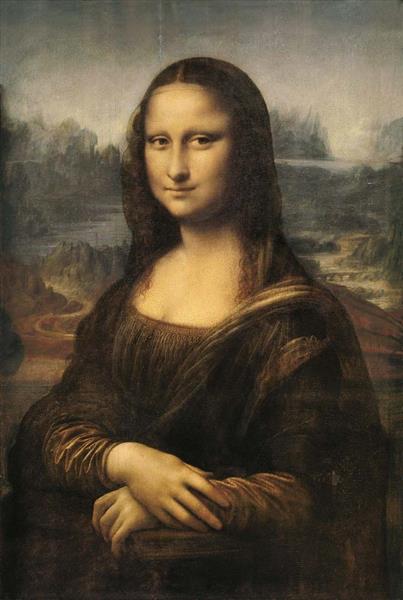
“Mona Lisa“ ( c.1503 – c.1519)
__________
the next sonata, Beethoven’s “Piano Sonata
is one that everyone’s heard, if only ever in
fragments, right up there with “Jingle Bells”
in our musical repertory, in our cultural DNA,
or, for that matter, Beethoven’s, also, other
the initial chords are peremptory, have
resonated, echoed, reverberated,
throughout the ages
this is not, however, the way one should
be addressing the aristocracy, Beethoven
was speaking for the growing Middle
Classes, who, hungering for the status
and refinement of the elite, the French
Revolution having just happened, were
crowding the burgeoning concert and
recital halls cashing in on that interest
the artist was now the main attraction,
where earlier the performer had been
merely decorative, the sponsored
employee of an, however benevolent,
aristocrat, see Mozart, see Haydn
ages, his revolutionary stuff, thumbing
his nose at convention, demanding
attention
R ! chard
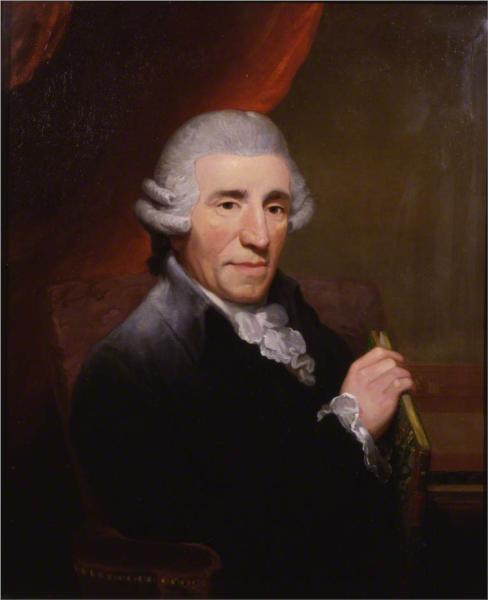
________
Haydn, profoundly underrated, was the
other pillar of Classical music during that
period, Beethoven, with half a foot only
in that era, uses its elements to yank us,
yelling and screaming, into the next, the
Romantic Era, 1800 to 1870 more or less,
more about which later
if Haydn sounds a lot like Mozart, it’s that
this piece was also written in 1789, both
were catering to the aristocracy, courts,
salons, music was therefore frivolous,
meant to be entertaining, not inspirational,
trills, a lot of decoration, technical agility,
prestidigitation over profundity
Beethoven will change all that, stay tuned
meanwhile, listen to, enjoy, Haydn’s Piano
today’s prescribed apple
R ! chard
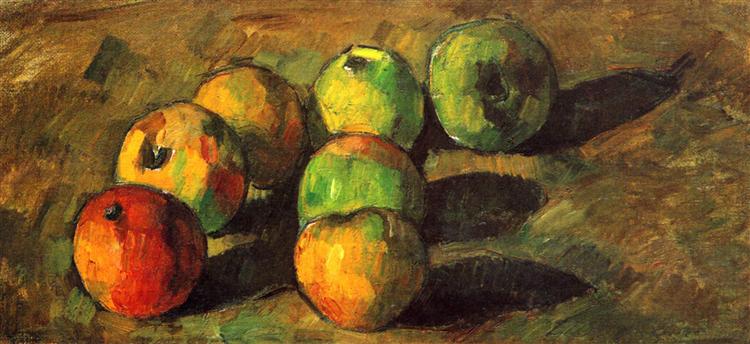
_____
is to an apple pie, its essential component,
after which the rest is decoration, however
inspired
sonatas existed before Mozart, but he’s
the one, along with Haydn, as well as
early Beethoven, who put them on the
musical map, 1750 to 1800, more or
less
it seems to me appropriate, therefore,
to start my Sonata Month then
here’s something by Mozart, 1789, his
three movements, fast, slow, fast – allegro,
adagio, allegretto – a perfect example of
the sonata as it was establishing itself
then, a piece of music consisting of
several distinct sections, movements,
meant to highlight contrasts, musical
agility in the artist, compositional
imagination
R ! chard
.jpg!Large.jpg)
Vincent van Gogh
_________
having introduced, however peripherally, in my
it wouldn’t be fair to not present Beethoven’s
contain iconic funeral marches, written, even
if you have no interest at all in such music, in
the blood of our Western culture, like
Shakespeare, to be or not to be, you’ve
heard the line, somewhere, even if you have
no idea what he might’ve been talking about
I don’t need to point out the dirges among
the movements, the solemn bits, they will
impose themselves, whether you’re paying
attention or not
Beethoven and Chopin sound a lot alike,
Beethoven, 1770 -1827, is earlier, pushed
the Classical Period into the Romantic Era,
pretty well, astonishingly, by himself
Chopin, 1810 – 1849, gives us the pinnacle
of Romantic music
I tell them apart by their beat, Chopin is
always on, Beethoven is always off, his
schtick, his revolutionary spirit, Chopin,
rather, played for the aristocracy, in
their courtly salons, much like Haydn,
but that’s another story
you might notice also that the last
all texture, a precursor to the later
Impressionism, in all of the arts
Beethoven, however, always takes
you on a journey, never gives you
merely background, there’s always
a core, a foundational melody
enjoy
R ! chard

_______
though I’ve focused especially, during
on Mozart, a second great pillar of
that era is Haydn, 1732 – 1809
here is one of his 62 piano sonatas,
which expresses more than anything
you’ve heard here yet the definition
of what music was at the time, or
should be, tonality, as I’ve earlier
said, tempo and repetition were
tantamount
listen for or the rigidity of the tempo,
the consistent melliflousness of
the melody, and therefore tonality,
and the repetition of all the
component tunes
I remember going to a drum recital
once, here in Vancouver, a guy was
expressing his artistry in a formal
venue, I was sitting in a forward
row, saw him set up his music on
his music stand, and I thought,
he’s going to have to turn the
pages, which he did, a drummer
that’s all I remember of the
presentation, but that was enough,
an entire revelation
turns the pages of his score, back
and forth, an interesting visual
expression of the imperative of
repetition in that era’s music,
having to return to what had
been written on the previous
page
also note that trills abound
note too in the second movement,
the adagio cantabile, the sudden
introduction of arpeggios,
transcendent, as though angels
had just appeared
which prefigures the metaphysical
aspirations of the Romantic Period
which ensued, see, for instance,
note also that we’re on fortepiano
here, a period instrument, a cross
between the harpsichord and the
modern instrument
R ! chard
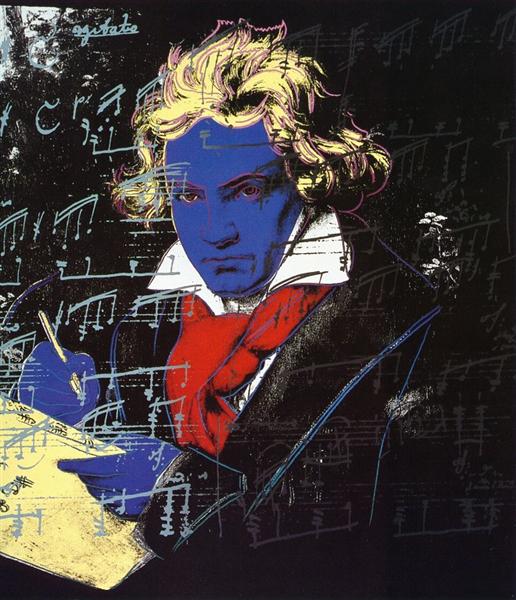







.jpg!Large.jpg)
